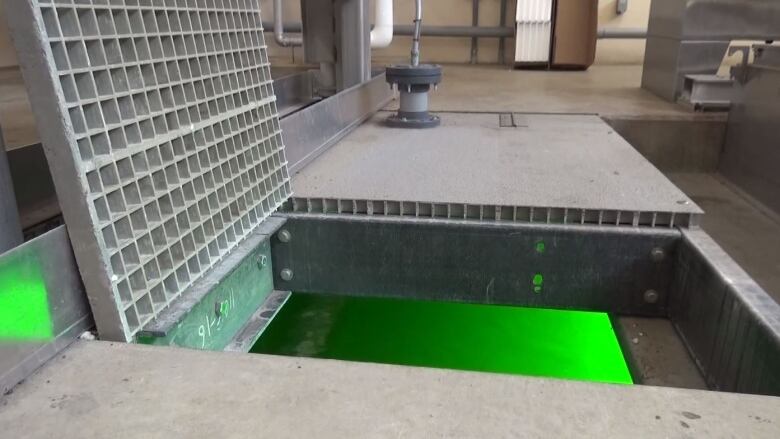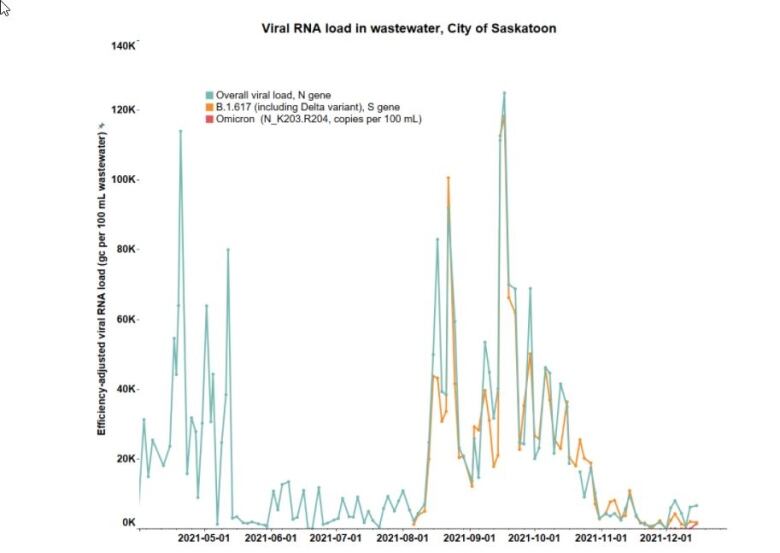COVID-19 levels in wastewater dip in 3 Saskatchewan cities
Omicron variant detected in Saskatoon's wastewater for the first time

Wastewater samples in Saskatoon have detected the Omicron variant for the first time.
The latest samples tested by the Global Institute for Water Security (GIWS) at the University of Saskatchewan show Omicron constitutes 32.8 per cent the overall SARS-CoV-2 viral load in the Saskatoon sample.
The GIWS saw 26.2 per cent decrease in evidence of COVID-19 in Saskatoon's wastewater compared to the previous week.

For more than a year, the institute has been using wastewater samples taken from treatment plants in Saskatoon, North Battleford and Prince Albert, and testing them for COVID-19.
The samples are used to predict cases of the virus in the future and whether they're expected to increase or decrease.
In Prince Albert's wastewater the viral levels of the disease decreased by 49.2 per cent and in North Battleford it was down 23 per cent.
The Omicron variant was not found in any of the Prince Albert or North Battleford samples.
WATCH|What is the Omicron variant?
Researchers at the University of Regina are also lookingfor traces of Omicron in the city's wastewater, with the help of the National Microbiology Laboratory in Winnipeg.













_(720p).jpg)


 OFFICIAL HD MUSIC VIDEO.jpg)
.jpg)



























































































